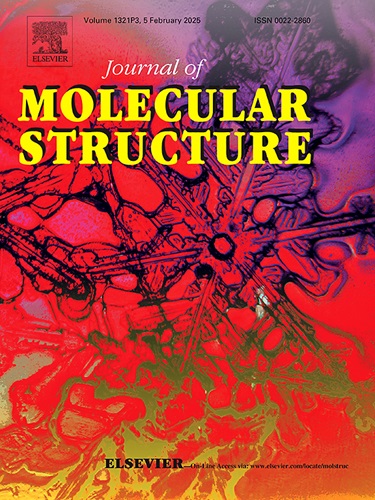The degradation of methyl orange by OH radicals in aqueous environments: A DFT study on the mechanism, kinetics, temperature and pH effects
IF 4.7
2区 化学
Q2 CHEMISTRY, PHYSICAL
引用次数: 0
Abstract
Methyl orange (MO) is extensively used in the food, textile, leather, and paper industries. As with many industrial chemicals, while primary environmental effects are documented, the secondary effects from its natural degradation have not been fully established. This study employs quantum chemical calculations to investigate the reaction of MO with HO• radicals that is a typical breakdown pathway in aqueous environments. It was found that the HO• + MO reaction in water can occur via either hydrogen transfer, single electron transfer, or radical adduct formation mechanisms, resulting in a variety of metastable intermediates and products. The calculated total rate constant (ktotal = 2.43×1010 M−1 s−1 at 298 K, pH = 9.2) is in good agreement with the experimental rate constant (kExp = (2.0 ± 0.3) ×1010 M−1 s−1at 298 K, pH = 9.2), thus confirming the accuracy of the calculation method. MO can degrade in natural water within the broad time range of 3.28 hrs to 56.6 years. The breakdown of methyl orange by HO• radicals is more effective at high temperatures and basic pH levels.

水环境中 OH 自由基对甲基橙的降解作用:关于机理、动力学、温度和 pH 值影响的 DFT 研究
甲基橙(MO)广泛用于食品、纺织、皮革和造纸行业。与许多工业化学品一样,虽然对环境的主要影响已有文献记载,但其自然降解产生的次生影响尚未完全确定。本研究采用量子化学计算方法来研究 MO 与 HO- 自由基的反应,这是其在水环境中的典型分解途径。研究发现,HO- + MO 在水中的反应可以通过氢转移、单电子转移或自由基加合物形成机制发生,从而产生多种可转移的中间产物和产物。计算得出的总速率常数(ktotal = 2.43×1010 M-1 s-1,298 K,pH = 9.2)与实验速率常数(kExp = (2.0 ± 0.3) ×1010 M-1 s-1,298 K,pH = 9.2)非常吻合,从而证实了计算方法的准确性。甲基橙在天然水中的降解时间范围很广,从 3.28 小时到 56.6 年不等。在高温和碱性 pH 水平下,HO- 自由基对甲基橙的分解更为有效。
本文章由计算机程序翻译,如有差异,请以英文原文为准。
求助全文
约1分钟内获得全文
求助全文
来源期刊

Journal of Molecular Structure
化学-物理化学
CiteScore
7.10
自引率
15.80%
发文量
2384
审稿时长
45 days
期刊介绍:
The Journal of Molecular Structure is dedicated to the publication of full-length articles and review papers, providing important new structural information on all types of chemical species including:
• Stable and unstable molecules in all types of environments (vapour, molecular beam, liquid, solution, liquid crystal, solid state, matrix-isolated, surface-absorbed etc.)
• Chemical intermediates
• Molecules in excited states
• Biological molecules
• Polymers.
The methods used may include any combination of spectroscopic and non-spectroscopic techniques, for example:
• Infrared spectroscopy (mid, far, near)
• Raman spectroscopy and non-linear Raman methods (CARS, etc.)
• Electronic absorption spectroscopy
• Optical rotatory dispersion and circular dichroism
• Fluorescence and phosphorescence techniques
• Electron spectroscopies (PES, XPS), EXAFS, etc.
• Microwave spectroscopy
• Electron diffraction
• NMR and ESR spectroscopies
• Mössbauer spectroscopy
• X-ray crystallography
• Charge Density Analyses
• Computational Studies (supplementing experimental methods)
We encourage publications combining theoretical and experimental approaches. The structural insights gained by the studies should be correlated with the properties, activity and/ or reactivity of the molecule under investigation and the relevance of this molecule and its implications should be discussed.
 求助内容:
求助内容: 应助结果提醒方式:
应助结果提醒方式:


